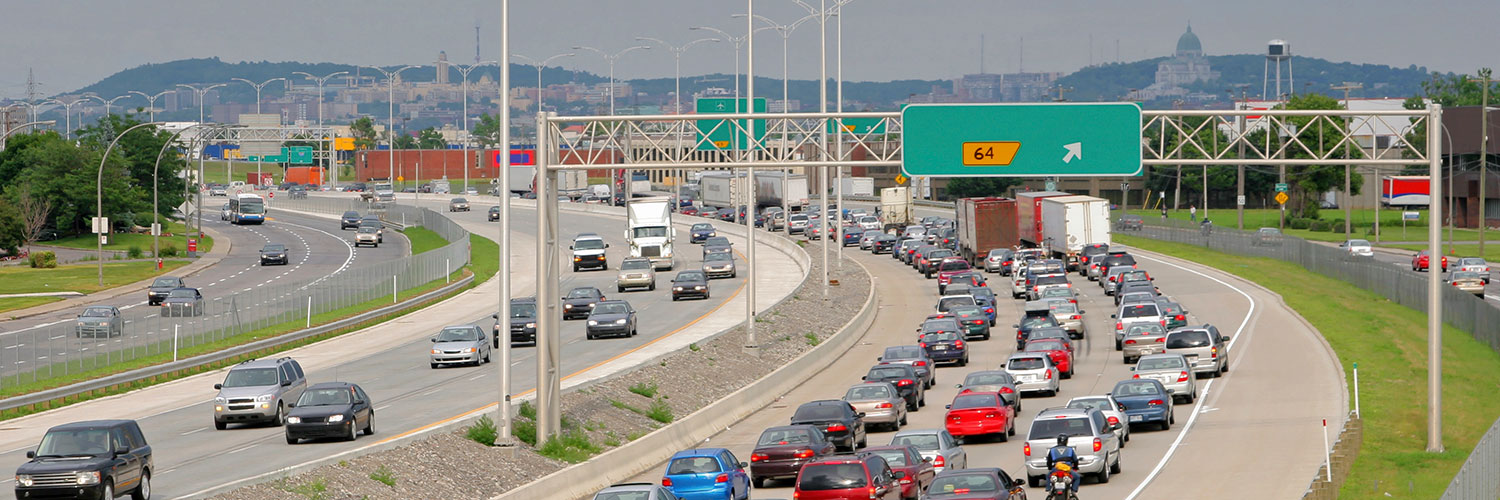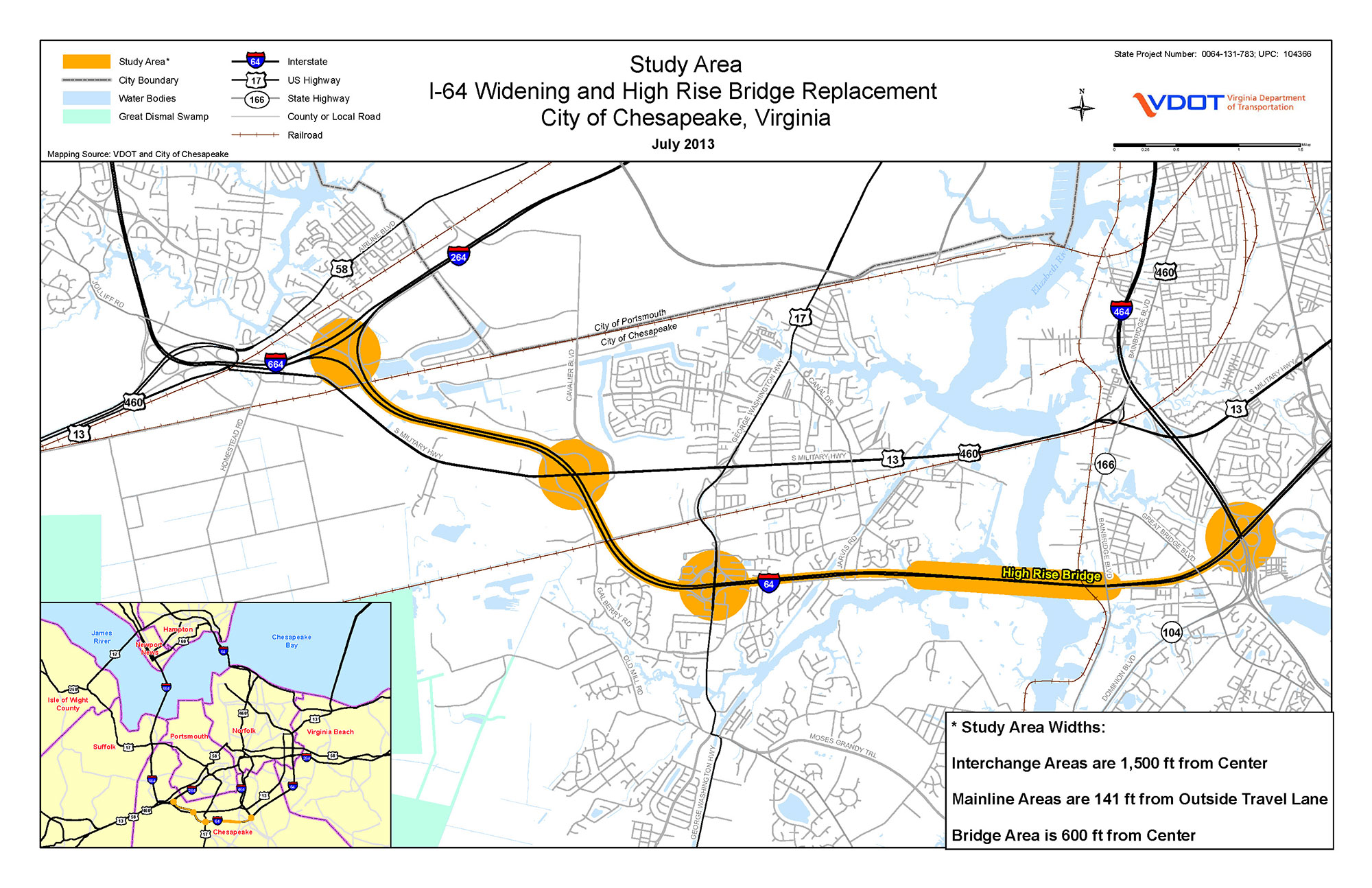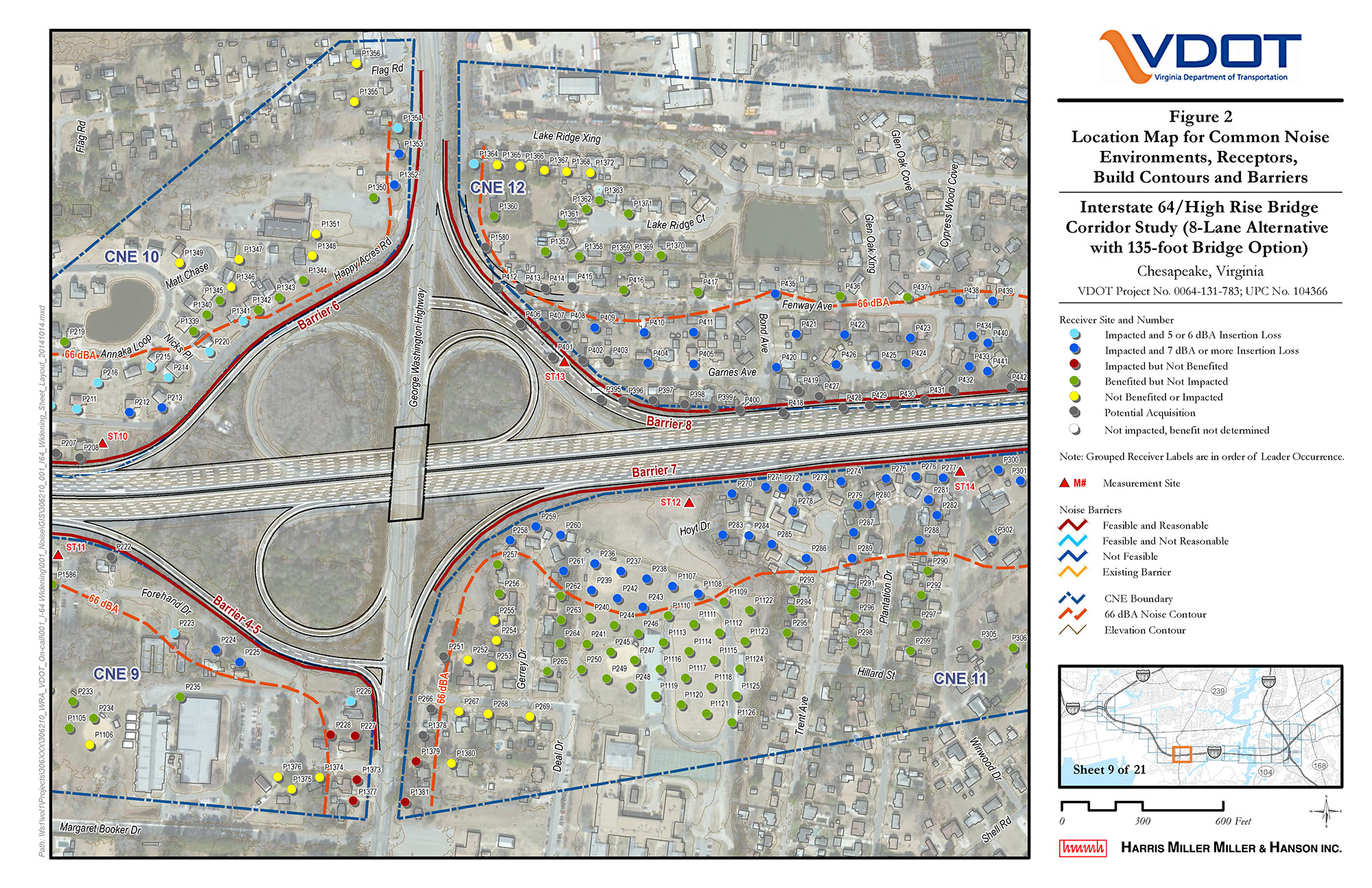The Virginia Department of Transportation (VDOT), in cooperation with the FHWA initiated this project to evaluate options to improve transportation conditions along the I-64 corridor between the I-46 interchange and the I-664 and I-264 interchanges at Bowers Hill in the City of Chesapeake, Virginia. HMMH supported the Environmental Assessment with noise and air quality analyses to evaluate potential environmental impacts from the study alternatives.
The traffic noise study component of the project evaluated the potential noise impacts for an 8-lane and a 10-lane Build Alternative, each of which included two height options for the proposed replacement bridge spanning the southern branch of the Elizabeth River in Chesapeake. The noise study evaluated potential noise impacts at more than 1,500 noise-sensitive receptors, along with the feasibility and cost-effectiveness of over 11 miles of proposed noise barriers.
A carbon monoxide (CO) hot-spot analysis was conducted since the projected average daily traffic exceeds the quantitative thresholds specified in the VDOT and FHWA Air Quality Studies Agreement. HMMH estimated carbon monoxide emission rates using the EPA MOVES model for the Existing, Interim Build, and Build out conditions and used the EPA CAL3QHC model to predict worst-case concentrations from queue and free flow links at receptor locations which were then added to background concentrations and compared to the National Ambient Air Quality Standards (NAAQS).
The project was identified as one with High Potential Mobile Source Air Toxic (MSAT) Impacts due to projected traffic volumes. HMMH conducted a quantitative MSAT analysis using the MOVES model to estimate net emission increases or decreases of seven air toxics compared to the No-Build conditions within the study area based on expected vehicle miles traveled (VMT) and other variables. The analysis was conducted consistent with the latest guidance developed by the FHWA for conducting a quantitative MSAT analysis using MOVES.




